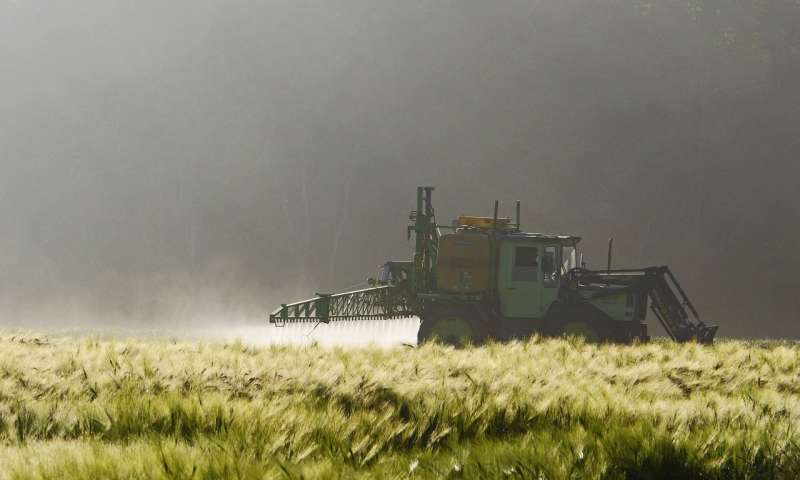Can herbicides cause breast cancer? Scientists discover a piece to the puzzle.


Scientists know that the solution to preventing breast cancer won’t come easily, but a collaborative team of scientists at Purdue University and the Institut National de la Santé et de la Recherche Médicale (INSERM)/Institut de Cancérologie de L’Ouest (ICO) in Nantes, France, say they’ve recently discovered one of the missing pieces of the puzzle when it comes to cancer prevention.
The Purdue Center for Cancer Research, working with ICO, the Cancer Center for Western France, as part of a memorandum of agreement with the Purdue-led International Breast Cancer and Nutrition (IBCN) initiative, discovered that glyphosate, the primary ingredient in widespread herbicides, can lead to mammary cancer when combined with another risk factor. The work was published in Frontiers in Genetics.
“This is a major result and nobody has ever shown this before,” says Sophie Lelièvre, a professor of cancer pharmacology in Purdue’s College of Veterinary Medicine and co-leader of IBCN. “Showing that glyphosate can trigger tumor growth, when combined with another frequently observed risk, is an important missing link when it comes to determining what causes cancer. “
Scientists exposed noncancerous human mammary epithelial cells to glyphosate in vitro over a course of 21 days. The cells were then placed in mice to assess tumor formation. Although cells exposed to glyphosate alone did not induce tumor growth, cancerous tumors did develop after glyphosate was combined with molecules that were linked to oxidative stress. Oxidative stress is a chemical reaction that occurs as the result of aging, diet, alcohol consumption, smoking or other stressors, and it alters the organization and integrity of the genome of the breast, aiding cancer development.
“What was particularly alarming about the tumor growth was that it wasn’t the usual type of breast cancer we see in older women,” Lelièvre (pronounced Le-LEE-YEA-vre) said. “It was the more aggressive form found in younger women, also known as luminal B cancer.”
Glyphosate has been the subject of widespread scientific debate when it comes to cancer research. The U.S. Environmental Protection Agency said in a 2017 risk assessment that the herbicide was likely not carcinogenic. However, in 2015, the World Health Organization’s International Agency for Research on Cancer said glyphosate was “probably carcinogenic.” Research that was published in 2017 also associated glyphosate with non-Hodgkin lymphoma.
Another key discovery researchers made was the ability to identify the pathway, at the epigenetic level (i.e., the chemical marks on DNA and proteins that control gene expression), used by glyphosate to endanger breast cells. Lelièvre and Gwenola Bougras-Cartron, the lead scientist on the project from ICO, hope this evidence will enable researchers to both detect and reverse the risk for breast cancer when associated with this combination of risk factors.
“There is a huge gap in the research that is targeted at understanding why cancer develops,” Lelièvre said. “This discovery is novel, primarily because until now, there hasn’t been any scientific evidence to show that a second factor when associated with common pollutants would be sufficient for cancer to develop. It’s very difficult to determine what causes breast cancer, but this is a critical step forward in the right direction so we can start working toward prevention as we have outlined in the international collaborative work of IBCN (www.purdue.edu/breastcancer).”
Cancer incidence continues to rise globally, with breast cancer being the most common type, according to Cancer.gov. Lelièvre said those facts alone continue to fuel the motivation for her research with the hope of eventually finding a way to prevent cancer before it even starts.
“There has been a heavy focus on research for both treatment and detection, but prevention just isn’t as prevalent,” Lelièvre said. “If we can find a way to mitigate the risks, we can have hope for fewer cases.”
Source: Read Full Article